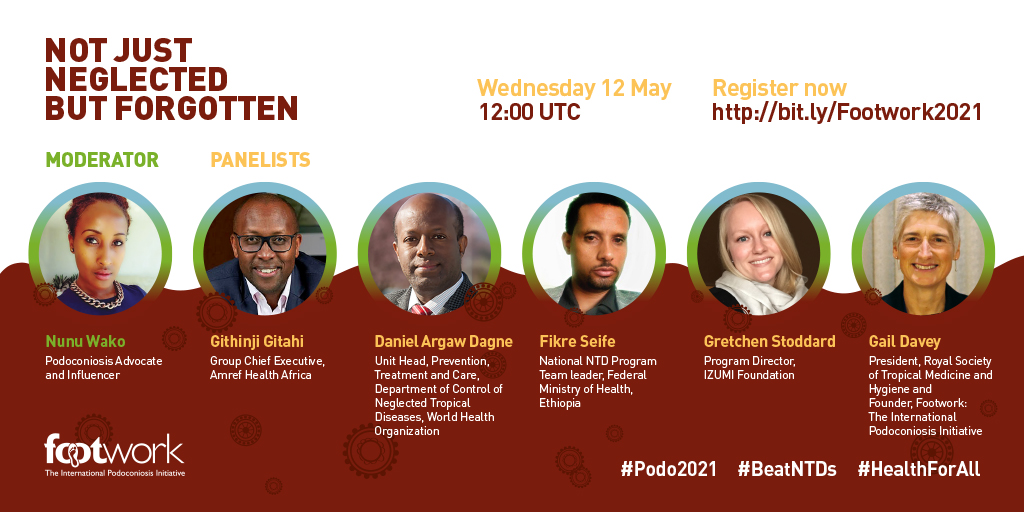Achieving universal health coverage by 2030, so that all individuals and communities around the world receive the health services they need without suffering financial hardship, is intertwined with the need for greater commitments and actions to tackle diseases of poverty and injustice that have been pushed further into the shadow by the COVID-19 pandemic.

On 12 May at 12:00 UTC, join a panel of leading advocates, experts, practitioners, and funders to consider the steps necessary to improve the lives of individuals and communities affected by the disease and to accelerate treatment and prevention by integrating the control neglected skin diseases.
One such disease is podoconiosis, a progressive, debilitating form of leg swelling caused by many years of barefoot contact with irritant soil in highland tropical areas. It affects an estimated four million of the most disadvantaged people in 27 countries across three continents. Podoconiosis is commonly misunderstood, causes great ostracism and distress, and ruins the livelihoods of people that suffer from it. It is so neglected that it does not even feature as one of the 20 diseases included in the new WHO neglected tropical diseases (NTDs) roadmap launched in January 2021.
And yet podoconiosis is preventable and treatable and may be the only non-communicable disease which can be eliminated in the foreseeable future. In the absence of the necessary political support and leadership needed to prevent podoconiosis and treat and care for those already affected, people are left to suffer in silence and isolation.
Despite podoconiosis’ absence from the WHO roadmap, the latter can provide an important and timely platform to focus and mobilise efforts to control and eliminate podoconiosis. The roadmap proposes concrete actions focused on integrated platforms for delivery of interventions that can improve programme cost–effectiveness and coverage, including in poorly resourced health systems contexts. It is this cross-cutting approach, through close coordination and multisectoral action, that can prevent and treat podoconiosis alongside other NTDs of the skin, such as lymphatic filariasis and mycetoma.
This one-hour webinar on 12 May, hosted by Footwork, the international Podoconiosis initiative, and supported by the Brighton and Sussex Medical School and the Institute of Development Studies, will mark the launch of Footwork’s new five-year strategy to mobilise and coalesce actors to build commitment and translate this into transformative action to improve the lives of individuals and communities affected by the disease and to accelerate treatment and prevention by integrating podoconiosis control into efforts to eliminate other NTDs, particularly skin-related NTDs.
Speaking on the panel will be:
- Githinji Gitahi, Group Chief Executive, Amref Health Africa
- Fikre Seife, National NTD Program team leader, Federal Ministry of Health, Ethiopia
- Daniel Argaw Dagne, Head, Prevention, Treatment, and Care Unit, Department of Neglected Tropical Diseases, World Health Organization
- Gretchen Stoddard, Program Director, IZUMI Foundation
- Gail Davey, President, Royal Society of Tropical Medicine & Hygiene, and Founder, Footwork: The International Podoconiosis Initiative
The session will be moderated by NuNu Wako, a podoconiosis advocate.
To register for the webinar, please follow this link: http://bit.ly/Footwork2021